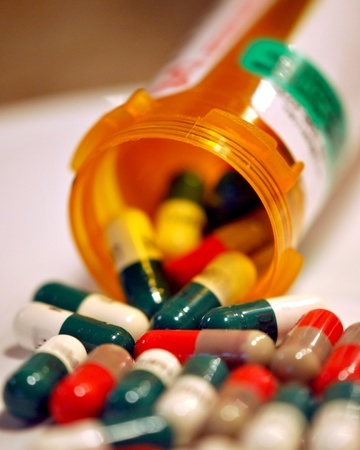

Prescription Drug Overdose Statistics
In 2011, prescription drug overdose became the leading cause of injury death in the United States after growing steadily over the last twenty-five years. Every day, 113 Americans die of drug overdose and another 6,748 people are treated in the emergency room for the misuse or abuse of prescription drugs.
In 2012, 259 million prescriptions for painkillers were written; that is enough for every adult to have a bottle of pills. In the United States alone, prescription opioid abuse costs about $55 billion per year. The breakdown in costs: 46 percent is attributable to workplace expenses such as lost productivity, 45 percent is due to healthcare costs such as abuse treatment, and nine percent is from criminal justice costs.
Prescription Drugs, Overdose, and Drug Abuse Defined
Drug: A drug is a chemical compound used for the diagnosis or treatment of disease or injury, for the relief of pain, or for the feeling it causes. A drug is either classified as a pharmaceutical (including both prescription and over-the-counter products) or illicit/illegal.
Overdose: An overdose occurs when too much of a drug is eaten, inhaled, injected, or absorbed through the skin. Overdoses are either intentional or unintentional. If the person taking or giving a substance did not mean to cause harm, then it is unintentional.
Drug Abuse or Misuse: The use of illicit or prescription or over-the-counter drugs in a manner other than as directed by a medical professional.
Prescription Drug Overdose Statistics
- For people aged 25 to 64 years old, drug overdose was responsible for more deaths than motor vehicle traffic crashes. In 2011 alone there were 41,340 drug overdose deaths in the United States.
- Drug overdose death rates have been rising steadily since 1992. There was a 118 percent increase in overdose deaths from 1999 to 2011.
- In 2011, 80 percent (33,071) of drug overdoses were unintentional, 12.8 percent (5,298) were of suicidal intent, 0.2 percent (80) were homicides, and 7 percent (2,891) were of undetermined intent.
- In 2011, there were over 2.5 million visits to the emergency department related to drug misuse and abuse. More than 1.4 million of these visits were related to pharmaceuticals.
- Between 2004 and 2005, almost 71,000 children (18 or younger) were taken to the emergency room each year due to accidental medication overdose. (These numbers exclude visits for self-harm, abuse, and recreational drug use).
- Forty percent of poisonings among children under age six involve pharmaceutical drugs. Almost 90 percent of all poisoning deaths are caused by ingesting drugs.
Most Common Drugs Involved in Drug Overdoses
In 2011, fifty-five percent (22,810) of drug overdoses were related to pharmaceuticals. Of these, 74 percent (16,917) involved opioid analgesics (also known as opioid pain relievers or prescription painkillers), and 30 percent (6,872) involved benzodiazepines. Note that some deaths include more than one type of drug.
About 1.4 million visits to the emergency room involved the non-medical use of pharmaceuticals. Among these visits, 501,207 overdoses involved the misuse of anti-anxiety and insomnia medications, and 420,040 visits were related to opioid analgesics.
Benzodiazepines are often found among people treated in the emergency department for misusing or abusing drugs. People who died of drug overdoses commonly had a combination of benzodiazepines and opioid analgesics in their bodies.
If you or a loved one were injured in an accident, you have enough to deal with. Let an experienced accident attorney fight for the full compensation that you deserve. It is not uncommon to receive a settlement from the insurance company that is five to ten times bigger with the help of a lawyer. Call the caring accident attorneys at Tario & Associates, P.S. today for a FREE consultation! You will pay nothing up front and no attorney fees at all unless we recover damages for you!
Read More